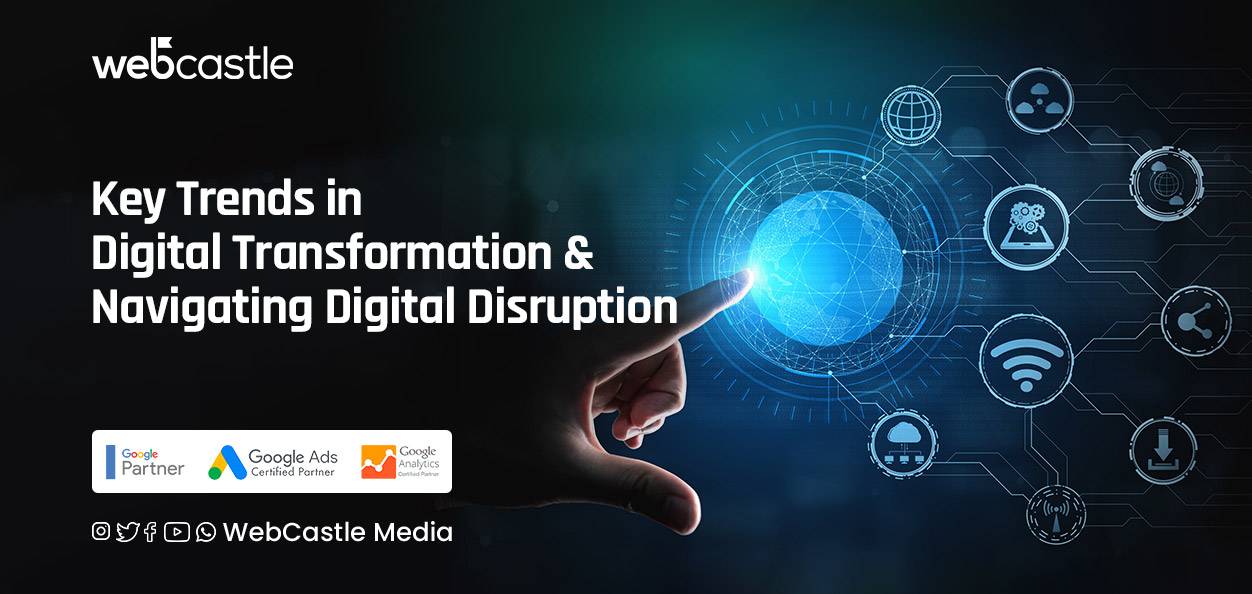
Digital transformation and disruption are rapidly changing the business landscape. Companies must adapt quickly to new technologies and shifting consumer expectations to remain competitive. Here are some of the key trends shaping digital transformation and how organizations can navigate them:
Cloud computing has gone mainstream, with the vast majority of businesses now using cloud platforms and infrastructure. The benefits include reduced costs, greater agility, and the ability to scale rapidly. However, migrating legacy systems to the cloud remains challenging. Companies need strategies to determine which systems should move to the cloud versus staying on-premises. Multi-cloud environments are also becoming more common, requiring integration and management across platforms.
AI is transforming processes and decision-making across industries. From chatbots to fraud detection to predictive analytics, AI can automate tasks and uncover insights from big data. Companies need an AI strategy focused on ethics, data quality, and building trust. They also need to reskill employees and reshape processes to incorporate AI responsibly. AI expertise is in high demand, so attracting and retaining talent is crucial.
5G networks promise drastically faster speeds, lower latency, and the ability to connect exponentially more devices. This will enable innovations like smart factories, autonomous vehicles, and remote healthcare. Many companies are still exploring 5G’s potential. Key focus areas include determining use cases, upgrading devices, and adopting edge computing to process data closer to the source.
Also Read:Digital Transformation: How Technology is Changing Business
Networked sensors and devices are creating smart environments, from homes to factories. The growth of IoT presents security and data management concerns but also opportunities to improve efficiency and create new services. Companies should have a clear IoT strategy that considers which data sources to connect, how to extract value from the data, and how to scale infrastructure while protecting against cyber threats.
CX is vital for digital transformation since failing to meet customer expectations can lead to churn. Leading companies use technologies like AI and big data to understand each customer’s needs and deliver personalized omnichannel experiences. But they also focus on empathy, communication, and culture to humanize CX. Customer feedback should continually refine strategies across the organization.
Data analysis skills are required at all levels to inform decision-making and identify opportunities. Companies are investing in data infrastructure (like data lakes), advanced analytics (like machine learning), and tools to visualize insights. Just as importantly, they are working to democratize data access and promote data literacy. Ethical data use is also a rising concern.
To accelerate transformation, many companies are adopting agile methods to replace traditional rigid project management processes. Cross-functional agile teams work in rapid iterations and continually incorporate user feedback. This allows faster innovation and improvement. Scaling agile practices across the enterprise is difficult, however, and requires leadership support plus change management.
APIs enable modular microservices architectures where platforms and systems can connect and exchange data. This breaks down silos, promotes reuse and scalability, and allows easier integration with partners or across cloud environments. Companies need API strategies to identify integration needs, adopt standards, provide developer resources, and address security requirements.
Customers and regulators increasingly expect sustainable practices. Digital transformation can support this goal through cleaner operations, resource reduction, reuse and recycling of e-waste, energy efficiency via smart buildings and grids, supply chain mapping and optimization, tracking carbon footprints, and enabling circular economies.
Cybersecurity
As technology use expands, cyber risks grow. Threats like ransomware, data breaches, and distributed denial of service attacks can be highly detrimental. Comprehensive strategies are needed to identify, assess, and mitigate risks. Cybersecurity should be baked into digital initiatives from the start. Employee training is equally important since mistakes often cause breaches.
To navigate digital disruption, companies must become agile, data-driven organizations focused on the evolving technology landscape and changing customer expectations. They need to break down barriers between departments, upskill workers, and foster an innovative culture. Leaders have a key role in communicating vision, supporting employees through transformations, and enabling experimentation. With sound strategies and execution, companies can master the key trends, leverage new opportunities, and deliver meaningful digital experiences. The journey requires effort but is necessary to build a responsive, resilient enterprise.
Digital transformation is the phenomenon of integrating digital technology and WebCastle into every aspect of a business, organization, or public administration. We are all taking a great leap into the Digital transformation in almost every field taking its pace at different speeds in different geographical areas and across industries.

Call
